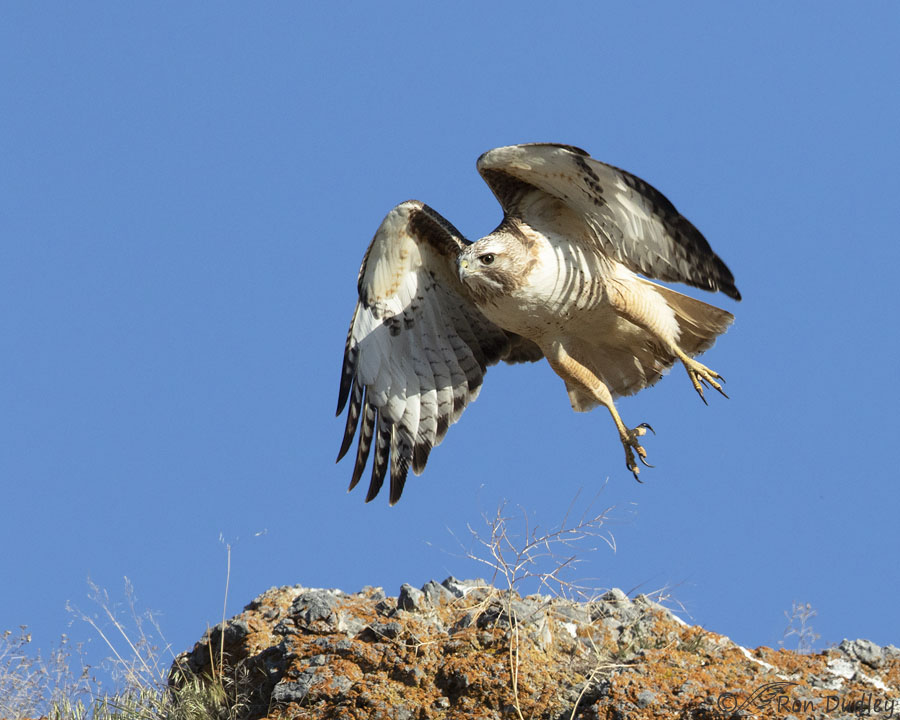A quick post this morning. I slept in longer than I planned so I don’t have much time.

1/2500, f/7.1, ISO 640, Canon 7D Mark II, Canon EF 500mm f/4L IS II USM, not baited, set up or called in
This past summer I photographed the palest Red-tailed Hawk I’ve ever seen, other than a leucistic red-tail I photographed several years ago. I got many shots of him taking off and in flight and five months ago I posted several of them but this one is new to my blog. While I was watching him through my lens as he was perched he looked even lighter than he does here. He appeared so pale I wasn’t even sure he was a red-tail at first.
I’m calling him a male because to me he looks like one and falconer Laura Culley agrees, based in part on the thickness of his tarsi. I still refer to this bird as ‘Pale Male’ because of the famous light colored red-tail of the same name that took up residence in New York’s Central Park for decades. The original Pale Male was one of the first red-tails known to nest on a building.
Now that bird made a name for himself.
Ron


Hi Don, I am so happy to see todays posting. I took pics yesterday of a hawk I cant I.’’’d. And it was diving on a few ravens for some time. It’s light also I would like to send it to you for a no or yes if its a pale male red tail.
Ron, I like the shot and commentary. Thanks for the continuing education about many things – mostly bird related – and sometimes beyond that.
I definitely would be doing a double-take if I saw him!
Got my attention!
What a beauty. And what a sight to behold.
Learning about Pale Male reminded me that Melbourne (our second largest city) has for a number of years had a pair of Peregrine Falcons nesting in the heart of the city.
I have included the link to the live stream HERE though you will have to wait for a couple of hours since it is still dark here.
EC, Peregrines fairly often nest on buildings in big cities around here, including here in Salt Lake City. The tall buildings are quite dangerous for their offspring when they’re learning to fly.
Word of the day “leucism” – a term used to describe a wide variety of conditions which result in the partial loss of pigmentation in an animal – which causes white, pale, or patchy coloration of the skin, hair, feathers, scales or cuticles, but not the eyes.
Love the photo Ron! Thank you for teaching me a new word. 🙂
Glad you enjoyed the photo and the new word, Kathleen.
Leuco means ‘white’, as in leucocyte (white blood cell). Leucistic is sort of the opposite of melanistic.
It may be my imagination, but at this angle he appears to have a rather full crop and then some, although not apparent in your previous post. Or is it possible for a Red-tailed Hawk (or any bird, for that matter) to be a bit on the plump side?
Yup, they can be plump Lyle. Falconer’s have to be very careful about feeding their birds too much, which is why they weigh them often.
He looks almost naked, he’s so pale. Let’s hope he’s as prolific as the celebrated Pale Male of NYC! Perhaps you’ll be seeing his similarly pale progeny in the coming years.
I hope so, Chris. But I don’t remember seeing him again after that day.
He really is pale. Beautiful photo though. I think if I was looking at this without any explanation I would be confused as to what it is. Pale Male reminds me that while serving in the Navy for five years I smoked 2 to 3 packs a day of Pall Malls. Had I not kicked that habit at the age of 25 I would never have been here to visit Feathered Photography. 🙂
I remember Pall Mall’s The mother of one of my good friends smoked them when I was a kid and she had cartons of them in the fridge – freezer I think. I’m glad you quit when you did, Everett.
“He” IS pale! Still a beautiful bird……..😀
Yup, he is.